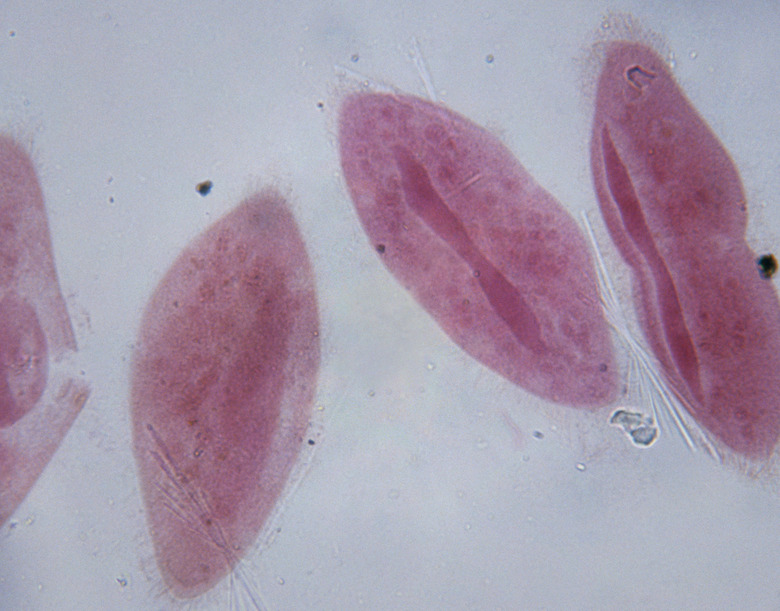What Is The Function Of The Pellicle?
A pellicle is a thin film of tissue, protein or other component with a wide range of roles and applications. It occurs naturally within organisms and on tooth enamel. It is also used in gastronomy and photography to coat or protect an object or surface.
TL;DR (Too Long; Didn't Read)
**TL;DR (Too Long; Didn't Read)**
In biology, a pellicle has a protective function, forming a thin layer of protein against the cell membrane. The protective film on the surface of tooth enamel is also called a pellicle. Pellicles also have roles in cooking and photography.
Pellicle in Biology
Pellicle in Biology
A pellicle is a very thin layer of protein that protects cell membranes in many types of protozoa, which are free-living or parasitic single-celled eukaryotes that feed on organic matter such as other microorganisms or organic tissues and debris. The pellicle, which is directly below the cell membrane and surrounds the cytoplasm, allows organisms like paramecia and ciliates to hold their shapes. The fine layers of translucent membranes also facilitate movement.
Pellicle on Teeth
Pellicle on Teeth
A pellicle is also a thin protein film on the surface of tooth enamel, and is sometimes called "enamel pellicle" or "salivary acquired pellicle." It is made up of saliva and crevicular fluid, plus bacterial and host tissue cell materials. The pellicle is effectively the tooth's skin and protects it from acids. However, bacteria can also attach to the pellicle, which sometimes leads to plaque formation.
Pellicle in Cooking
Pellicle in Cooking
Cold-smoking meat retains the flavor of smoke (from herbs, spices, fruit skins or smoldering hardwood chips) at low temperatures. As well as meat, you can smoke almost any poultry, game, seafood, sausage, vegetable, hard cheese or nut. After the food is cured and rinsed, it is dried thoroughly. When excess surface moisture is removed, a skin known as a pellicle forms. By trapping flavors and moisture inside the food, this gives the food its distinctive smoky flavor.
Pellicle in Photography
Pellicle in Photography
In photography, a pellicle mirror is a very thin, lightweight, translucent mirror used in a single-lens reflex (SLR) camera to split the light beams into two beams of reduced intensity. Effectively, it's a thin protective outer layer of skin. It was first used by Canon on its Pellix camera in 1965.
By splitting the beams, different camera effects can be achieved by varying combinations of shutter speed and film exposure. Because the film is extremely thin, the photographer can avoid the usual reflections created by typical glass beam splitters.
Cite This Article
MLA
Gillespie, Claire. "What Is The Function Of The Pellicle?" sciencing.com, https://www.sciencing.com/function-pellicle-8769612/. 20 August 2018.
APA
Gillespie, Claire. (2018, August 20). What Is The Function Of The Pellicle?. sciencing.com. Retrieved from https://www.sciencing.com/function-pellicle-8769612/
Chicago
Gillespie, Claire. What Is The Function Of The Pellicle? last modified March 24, 2022. https://www.sciencing.com/function-pellicle-8769612/
